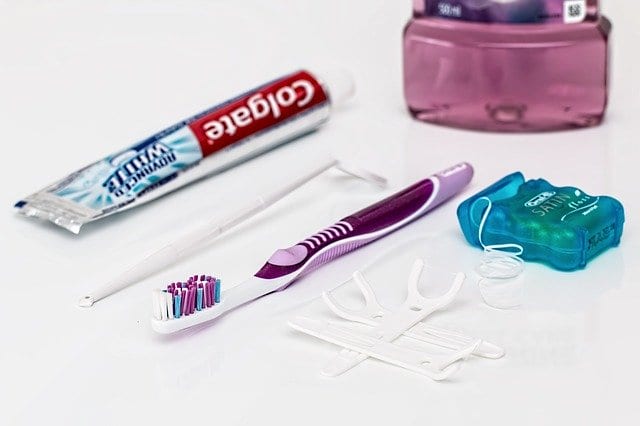Here are some tips to help you get through some common orthodontic issues without even needing to leave your house!

The COVID-19 pandemic has changed so much throughout the United States when it comes to obtaining healthcare of any type, and the virus has also played a significant factor in changing the future of the orthodontic industry as well. Although there have been many changes in how we conduct in-person appointments, we’re also very proud to be offering virtual orthodontic appointments so our new and existing patients can get the assistance they need at their convenience.
No one should have to suffer when they’re experiencing any kind of issue with their orthodontic care, and if you’re in a non-emergency situation our team will be able to support you with tips on how to handle your specific orthodontic problems virtually or in-person.
It’s important to us to make sure all of our patients feel as safe as possible throughout every step of your orthodontic care, which is why we know how much it means to people to simply have this type of option. We’ve also created the following list of tips to help you when it comes to handling non-emergency orthodontic issues from your home, so always feel free to reach out to us online if you’re experiencing any kind of discomfort and would like to try to fix certain non-emergency issues on your own!
Your DIY Toolbox For Orthodontic Care
There are certain items you’re going to need when it comes to conducting DIY orthodontic care for non-emergency issues. This somewhat basic kit can always help you out when it comes to properly adjusting to many different types of non-emergency orthodontic issues, and it includes the following:
- Dental floss
- Orthodontic relief wax
- Q-tips
- Disinfected tweezers
- An interproximal brush
- Toothpicks
- Salt (for creating a rinse)
- A topical anesthetic (ex. Ora-Gel)
- Non-prescription pain relievers (ex. Aspirin, Ibuprofen, Acetaminophen)
When you have all these tools at your house, you’ll be much more prepared in handling non-emergency orthodontic issues in a DIY manner. But we can’t stress enough how important it is for you to always reach out to our offices when you’re considering doing anything yourself pertaining to your orthodontic care, because we’ll be able to help you better decipher if you’re experiencing an emergency situation or not, and we’ll be able to provide you with the proper information to be as safe as possible!
Lost O-Ring
An O-Ring is either a thin wire or small rubber band that helps hold your archwire within the bracket, and this is usually attached to a tooth. When an O-Ring pops off it’s rather obvious, because you’ll see that your bracket is suddenly exposed, or your wire is a bit out of place.
If your O-Ring has simply just popped itself off somehow, then it’s possible to reattach it by utilizing disinfected tweezers. If your O-Ring is made of wire then it’s most likely best to simply pull it out when it comes loose, because this will most likely require an in-person replacement appointment at one of our offices.
But if your wire O-Ring is just slightly coming out of place or is poking you, then you can utilize a q-tip to push it back in place so it’s not being uncomfortable or irritating your lip.
Unduly Discomfort
It’s somewhat natural for orthodontic treatment to include soreness or feelings of achiness, because this is simply a part of the process. As a patient’s teeth begin to shift into their proper positioning, it’s likely that they’ll feel some form of discomfort for at least a couple of days. But it’s absolutely important to keep in mind that you should always reach out to our team if your discomfort lasts longer than a few days!
One DIY trick to help you when it comes to dealing with discomfort is to rinse your mouth out with warm salt water, and then utilize an over-the-counter pain reliever. This simple remedy can do a great job at easing any pain that your orthodontic treatment may temporarily instill.
Sores In Mouth
When braces are irritating within a patient’s mouth, it’s somewhat common for mouth sores to develop. A lot of times these mouth sores will develop on a patient’s lips, on the inside of their cheeks, or even on the tongue. These mouth sores aren’t dangerous by any means, but they most certainly can be uncomfortable!
This is why we suggest that you utilize a topical anesthetic, which can go a long way when a patient is experiencing mouth sores. All you’ll need to do is use a q-tip or cotton swab to properly apply the anesthetic exactly where the sore is located within your mouth, and if your mouth sores don’t get better after a few days it’s important that you call us!
Irritation In Mouth
We all know how the tissue within our mouths can pretty easily become irritated from abrasions caused by braces, and this is where your orthodontic relief wax can come into help you when experiencing just about any kind of irritation.
All you’ll need to do is utilize a small ball of your relief wax and then firmly press it up against your bracket to provide the necessary buffer between your gums and braces.
You can always find this kind of wax at drug stores and pharmacies just in case you’re in a bind and can’t make it to one of our offices.
Something Has Gotten Wedged In Your Braces
There are many instances in which something simply gets caught within your braces and creates discomfort, and in this situation your interproximal brush can do wonders at dislodging whatever it may be that’s become stuck.
Dental floss is also great at removing things that get stuck in braces, and it can also help with relieving irritation.
Protruding Wires
No one likes the feeling of a protruding wire poking into their mouth, so if your wire has somehow worked itself out a little bit you’ll be able to utilize your disinfected tweezers, tooth pick or q-tip to push the wire back into place.
It’s possible that you may not be able to adequately push your protruding wire back into place, and when this is the case it will be important to use your relief gel to properly cover the irritated oral area.
This type of issue is something you should always reach out to us about through our virtual appointment option, because by sending us some pictures we’ll be able to better know if your protruding wire is a potential DIY fix or if you need to come into the office to have one of our specialists adjust the wire for you.
Loosened Band or Bracket
This type of situation is most definitely not a DIY orthodontic care situation, and it will be important that you schedule an appointment with us as soon as possible so we can efficiently take care of this somewhat serious orthodontic issue.
Thank You For Your Understanding During These Unprecedented Times
The COVID-19 pandemic has certainly changed the entire landscape of the orthodontic care industry, which is why all of us at James Karpac Orthodontics are going above and beyond to make sure we’re remaining on the cutting edge of the industry in terms of hygiene and safety precautions.
Although DIY orthodontic care even in non-emergency situations isn’t always advised, we’re here to help you when it comes to handling certain issues with your braces or Line-M-Up™ from home via our virtual appointments.
So if you have any questions or concerns about handling certain orthodontic issues from home, always feel free to reach out to us online or call us at 614-766-0330 (Dublin office) or 614-471-6355 (Gahanna office) today to speak with our team!

